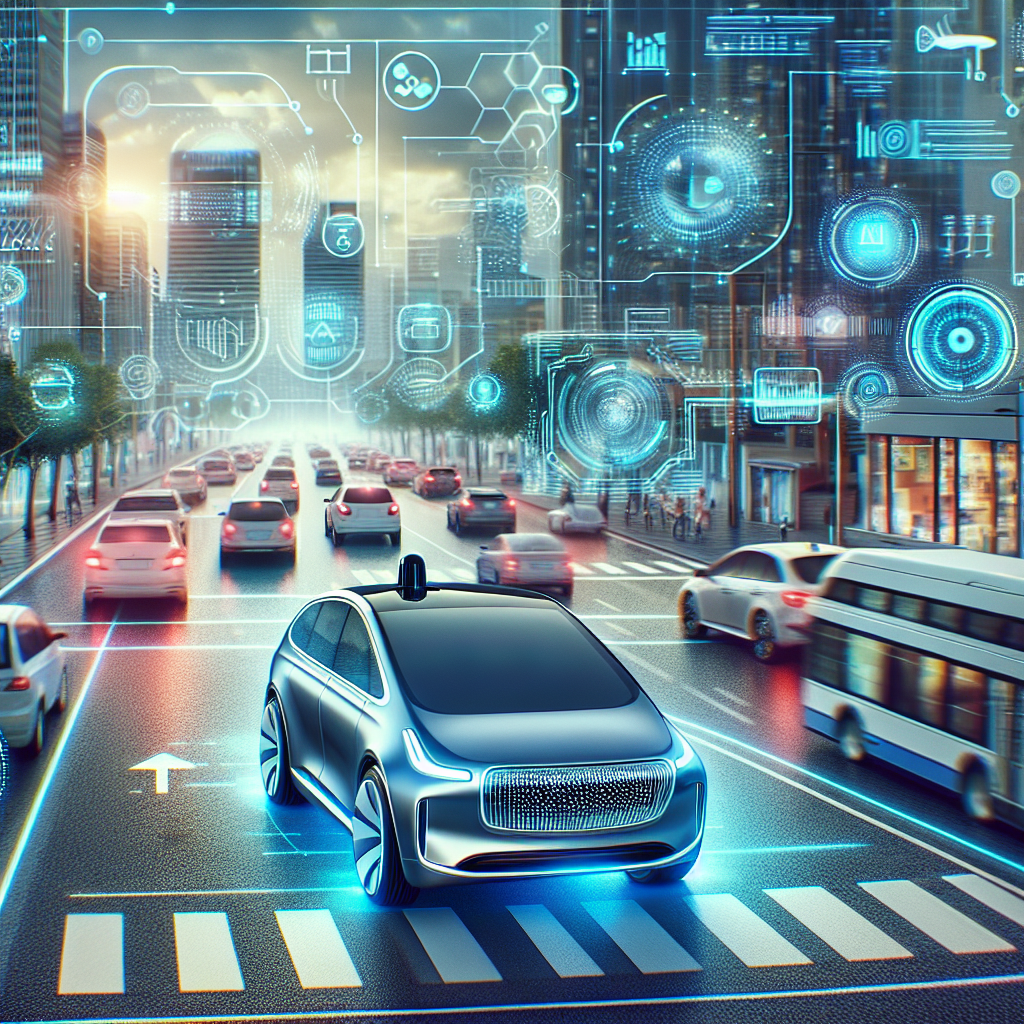The Role of AI-Driven Solutions in Autonomous Vehicles and Transportation
Artificial Intelligence (AI) has been revolutionizing various industries, and one of the most significant areas of impact is in the development of autonomous vehicles and transportation systems. AI-driven solutions have the potential to transform the way we move from one place to another, making transportation safer, more efficient, and more sustainable. In this article, we will explore the role of AI in autonomous vehicles and transportation and discuss how these technologies are shaping the future of mobility.
AI in Autonomous Vehicles
Autonomous vehicles, also known as self-driving cars, are equipped with AI technologies that enable them to perceive their environment, make decisions, and navigate without human intervention. These vehicles rely on a combination of sensors, cameras, radar, lidar, and GPS to gather data about their surroundings and AI algorithms to process this data in real-time.
One of the key roles of AI in autonomous vehicles is in perception and object recognition. AI algorithms analyze sensor data to identify objects such as pedestrians, other vehicles, road signs, and traffic lights. By accurately detecting and classifying objects, autonomous vehicles can make informed decisions about their movements, such as slowing down, changing lanes, or stopping at intersections.
AI also plays a crucial role in decision-making and planning in autonomous vehicles. AI algorithms use complex mathematical models to predict the behavior of other road users, assess potential risks, and plan the vehicle’s trajectory accordingly. These algorithms take into account factors such as traffic conditions, road rules, and weather conditions to ensure safe and efficient driving.
Furthermore, AI technologies enable autonomous vehicles to learn and adapt to new situations. Machine learning algorithms analyze vast amounts of data collected during driving to improve the vehicle’s performance over time. This continuous learning process allows autonomous vehicles to become more reliable and capable of handling a wide range of driving scenarios.
AI in Transportation Systems
In addition to autonomous vehicles, AI-driven solutions are also transforming transportation systems as a whole. AI technologies are being used to optimize traffic flow, improve public transportation services, and reduce congestion on roads. By analyzing data from sensors, cameras, and other sources, AI algorithms can provide real-time insights into traffic patterns, accidents, and road conditions.
One example of AI in transportation systems is predictive maintenance. AI algorithms can analyze data from vehicles and infrastructure to predict when maintenance is needed, preventing breakdowns and reducing downtime. By proactively addressing maintenance issues, transportation operators can improve the reliability and efficiency of their fleets.
AI is also being used to optimize routing and scheduling in public transportation systems. By analyzing historical data and real-time information, AI algorithms can recommend the most efficient routes, schedules, and modes of transport for passengers. This optimization not only improves the overall passenger experience but also reduces costs and emissions by minimizing fuel consumption and congestion.
Furthermore, AI technologies are playing a crucial role in the development of connected and autonomous transportation systems. By enabling vehicles to communicate with each other and with infrastructure, AI can improve safety, efficiency, and coordination on the roads. For example, AI algorithms can help vehicles to coordinate their movements at intersections, merge lanes smoothly, and avoid collisions.
FAQs
Q: How safe are autonomous vehicles compared to traditional vehicles?
A: Autonomous vehicles have the potential to be safer than traditional vehicles because they are not prone to human errors such as distractions, fatigue, or impaired driving. However, the safety of autonomous vehicles depends on the reliability of their AI technologies and the ability to handle unexpected situations on the road. Extensive testing and validation are essential to ensure the safety of autonomous vehicles.
Q: How do autonomous vehicles handle complex driving scenarios such as inclement weather or construction zones?
A: Autonomous vehicles use a combination of sensors, cameras, and AI algorithms to perceive and navigate through complex driving scenarios. For example, lidar sensors can detect obstacles in low visibility conditions such as fog or rain, while AI algorithms can analyze road signs and construction zones to adjust the vehicle’s speed and trajectory accordingly.
Q: What are the potential benefits of AI-driven solutions in transportation systems?
A: AI-driven solutions in transportation systems can offer a wide range of benefits, including improved safety, efficiency, and sustainability. By optimizing traffic flow, reducing congestion, and enhancing public transportation services, AI technologies can make transportation more accessible, affordable, and environmentally friendly. Additionally, AI can help to reduce emissions, energy consumption, and maintenance costs in transportation systems.
In conclusion, AI-driven solutions are playing a crucial role in the development of autonomous vehicles and transportation systems. By enabling vehicles to perceive, plan, and learn autonomously, AI technologies have the potential to transform the way we move and revolutionize the future of mobility. As these technologies continue to evolve, we can expect to see safer, more efficient, and more sustainable transportation systems that benefit society as a whole.

